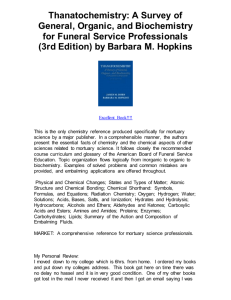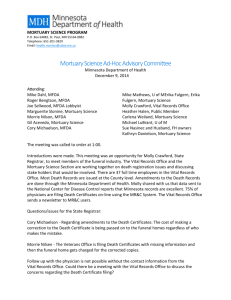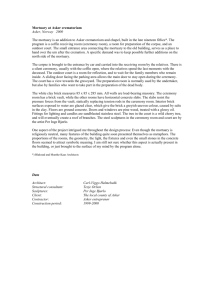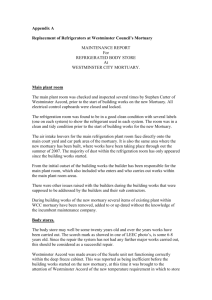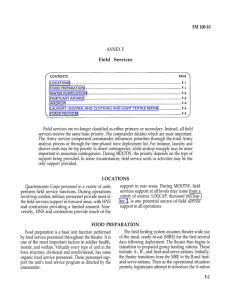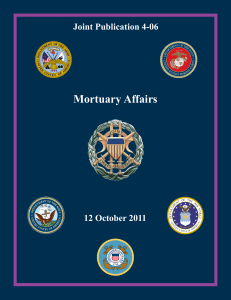FM 10-1 Traditionally, the US Army cares for its dead
advertisement
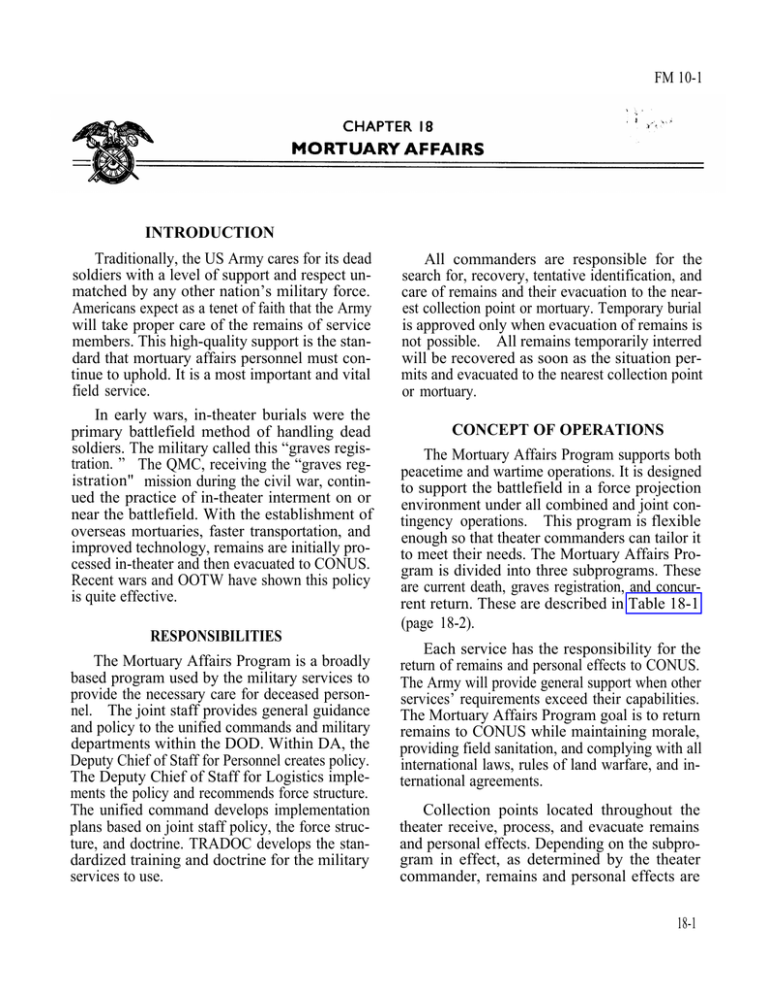
FM 10-1 INTRODUCTION Traditionally, the US Army cares for its dead soldiers with a level of support and respect unmatched by any other nation’s military force. Americans expect as a tenet of faith that the Army will take proper care of the remains of service members. This high-quality support is the standard that mortuary affairs personnel must continue to uphold. It is a most important and vital field service. In early wars, in-theater burials were the primary battlefield method of handling dead soldiers. The military called this “graves registration. ” The QMC, receiving the “graves registration" mission during the civil war, continued the practice of in-theater interment on or near the battlefield. With the establishment of overseas mortuaries, faster transportation, and improved technology, remains are initially processed in-theater and then evacuated to CONUS. Recent wars and OOTW have shown this policy is quite effective. RESPONSIBILITIES The Mortuary Affairs Program is a broadly based program used by the military services to provide the necessary care for deceased personnel. The joint staff provides general guidance and policy to the unified commands and military departments within the DOD. Within DA, the Deputy Chief of Staff for Personnel creates policy. The Deputy Chief of Staff for Logistics implements the policy and recommends force structure. The unified command develops implementation plans based on joint staff policy, the force structure, and doctrine. TRADOC develops the standardized training and doctrine for the military services to use. All commanders are responsible for the search for, recovery, tentative identification, and care of remains and their evacuation to the nearest collection point or mortuary. Temporary burial is approved only when evacuation of remains is not possible. All remains temporarily interred will be recovered as soon as the situation permits and evacuated to the nearest collection point or mortuary. CONCEPT OF OPERATIONS The Mortuary Affairs Program supports both peacetime and wartime operations. It is designed to support the battlefield in a force projection environment under all combined and joint contingency operations. This program is flexible enough so that theater commanders can tailor it to meet their needs. The Mortuary Affairs Program is divided into three subprograms. These are current death, graves registration, and concurrent return. These are described in Table 18-1 (page 18-2). Each service has the responsibility for the return of remains and personal effects to CONUS. The Army will provide general support when other services’ requirements exceed their capabilities. The Mortuary Affairs Program goal is to return remains to CONUS while maintaining morale, providing field sanitation, and complying with all international laws, rules of land warfare, and international agreements. Collection points located throughout the theater receive, process, and evacuate remains and personal effects. Depending on the subprogram in effect, as determined by the theater commander, remains and personal effects are 18-1 FM 10-1 evacuated to the theater evacuation point or temporary interment site. Interments are only temporary. Collection points are staffed to receive and process remains and personal effects. and FM 10-63 provide policy and doctrine on mortuary affairs. At theater level, a mortuary affairs company will operate a mortuary and personal effects depot. Remains and personal effects are evacuated, usually by air, to a CONUS point of entry mortuary. Mortuary affairs capabilities will always include support for all operations. This support will include the the basic skills of assisting search and recovery missions, tentative identification, and timely evacuation of remains and personal effects. Some of the emerging concepts and systems are discussed below. At the CONUS port of entry mortuary, forensic specialists make a positive identification of the remains and prepare them for release IAW the wishes of the next-of-kin. PLANNING CONSIDERATIONS Mortuary affairs is a sensitive responsibility. Proper planning and coordination will ensure the effective evacuation of remains. Commanders at all levels should have plans for the rapid evacuation of remains. At the unified command level, a Joint Mortuary Affairs Office (JMAO) is established to provide the commander with guidance, coordination capability, and staff supervision for all mortuary affairs operations. JCS Joint Mortuary Affairs Policy CJCS MOP 16 Table 18-1. Mortuary affairs subprograms EMERGING CONCEPTS AND SYSTEMS Revised Concept of Operation The revised concept of operation, which is under development, continues to support the three mortuary affairs subprograms. The key change is added flexibility to support conflicts ranging from war to OOTW. See Figure 18-1 (page 18-3). The revised concept provides for the development and placement of a collection company in the corps area to operate collection points throughout the corps, division, and brigade areas. These points will receive remains from the maneuver units, conduct search and recovery operations, and arrange for the evacuation of remains to a mortuary or temporary burial site. FM 10-1 Decontamination Operations This revised concept also includes the development and placement of a mortuary affairs company in the TAACOM. This company can operate a personal effects depot. It can also operate two temporary burial sites, two theater evacuation points, or one in-theater mortuary. Computer-Assisted Postmortem Identification (CAPMI) System CAPMI is a microcomputer-based rapid-sorting software program. By sorting a large data base of antemortem (predeath) and postmortem (postdeath) records, a list of possible identities is quickly generated. This speeds up the identification process. The Armed Forces Institute of Pathology is proponent for CAPMI. To further our national policy of returning all US service personnel who die in any theater of operation to the next of kin, new decontamination procedures are being developed. Plans call for the establishment of a task-organized mortuary affairs decontamination collection point (MADCP). A MADCP will setup and operate near areas that have a large number of contaminated remains. For other cases, collection point teams may decontaminate e remains. SAFETY The Army’s increasing deployment to areas in which disease prevention and control is inadequate greatly increases the risk to mortuary affairs soldiers from blood-borne diseases. Increased personnel protective measures, including immunizations, should reduce this threat. X-Ray System, Dental, Miniature This hand-held X-ray machine runs on a rechargeable battery system and can produce high quality X-ray images. Using self-developing film, the system will afford mortuary affairs personnel an opportunity to gather postmortem dental data rapidly in a temporary field facility. Mortuary Affairs Automation System The mass fatality field information management system (MFFIMS) is a laptop computer based information and tracking program. Using MFFIMS, forward collection points can rapidly send information about remains to the rear and to CONUS. It also provides near real-time location status for each remains. MFFIMS is especially useful when managing a mass fatality event. 18-4 RELATED DOCTRINE A number of publications provide mortuary affairs support information. Some of the more important of these are listed in Table 18-2. Table 18-2. Publications related to mortuary affairs
